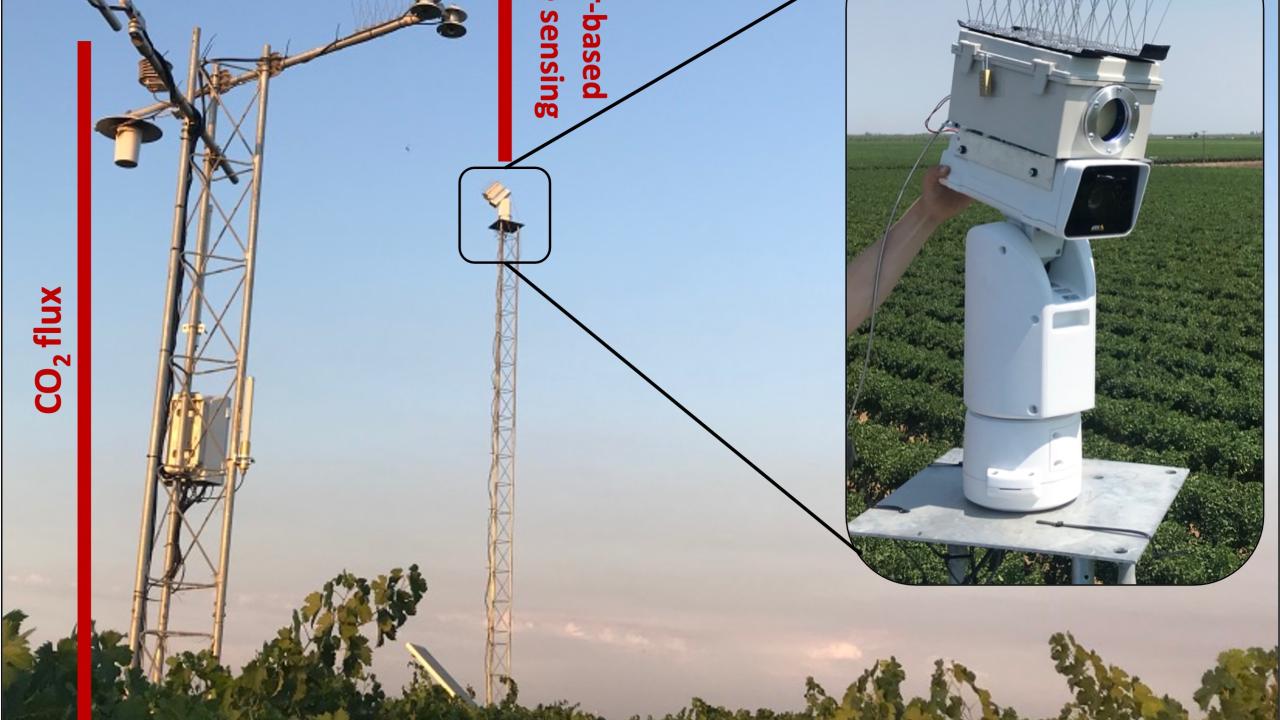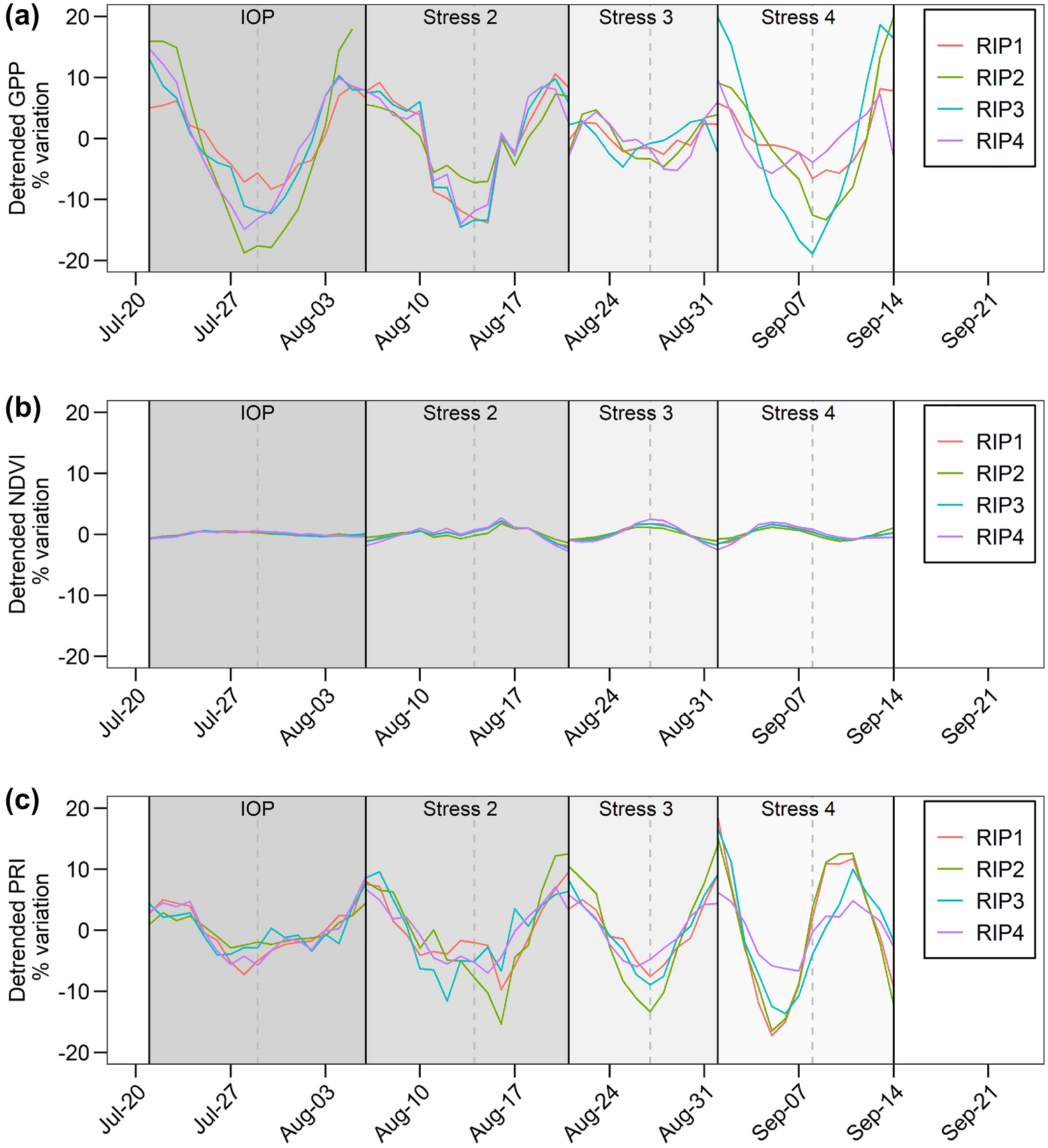
How can tower-based remote sensing track short term stress in grapes? New paper from Chris Wong
Frequent drought and high temperature conditions in California vineyards necessitate plant stress detection to support irrigation management strategies and decision making. Remote sensing provides a powerful tool to continuously monitor vegetation function across spatial and temporal scales. In this study, we utilized a tower-based optical-remote sensing system to continuously monitor four vineyard subplots in California’s Central Valley. We compared the performance of the greenness-based normalized difference vegetation index (NDVI) and the physiology-based photochemical reflectance index (PRI) to track variations of eddy covariance estimated gross primary productivity (GPP) during four stress events between July and September 2020. Our results demonstrate that NDVI was invariant during stress events. In contrast, PRI was effective at tracking the short-term stress-induced declines and recovery of GPP associated with soil water depletion and increased air temperature, as well as reductions in GPP from decreased PAR caused by smokey conditions from nearby fires. Canopy-scale remote sensing can provide continuous real-time data, and physiology-based vegetation indices such as PRI can be used to monitor variation of photosynthetic activity during stress events to aid in management decisions.
Wong, C.Y.S., Bambach, N.E., Alsina, M.M. et al. Detecting short-term stress and recovery events in a vineyard using tower-based remote sensing of photochemical reflectance index (PRI). Irrig Sci (2022). https://doi.org/10.1007/s00271-022-00777-z
